
Have you ever wondered which football stadiums are the largest in the world? With all of the commotion, chanting, and noise, large crowds are what make being in a stadium to watch a football game a thrilling environment. By fans attending games, it encourages teams to perform better, therefore the more people actively supporting the team, the better. There are stadiums that have the capacity to accommodate a remarkable amount of fans, which may create amazing atmospheres on game days.
Contrary to popular belief, however, World Cup matches have not always been held at the largest football stadiums. We’ve gathered a guide to the largest football stadiums in the world for you to enjoy and learn about their sizes, history and their uses!
What Is the World’s Largest Football Stadium?
Many incredible stadiums designed to host the greatest and best football matches can be found throughout Europe, Africa, Asia, and the Americas. Stadiums like the 107,000-seat Michigan Stadium in the US or the 91,000-capacity Beijing National Stadium in China won’t be making our list since they weren’t designed with football matches in mind, but the rest which have made it onto our list deserve all the hype!
10. Egypt’s Borg El Arab Stadium – Capacity: 86,000
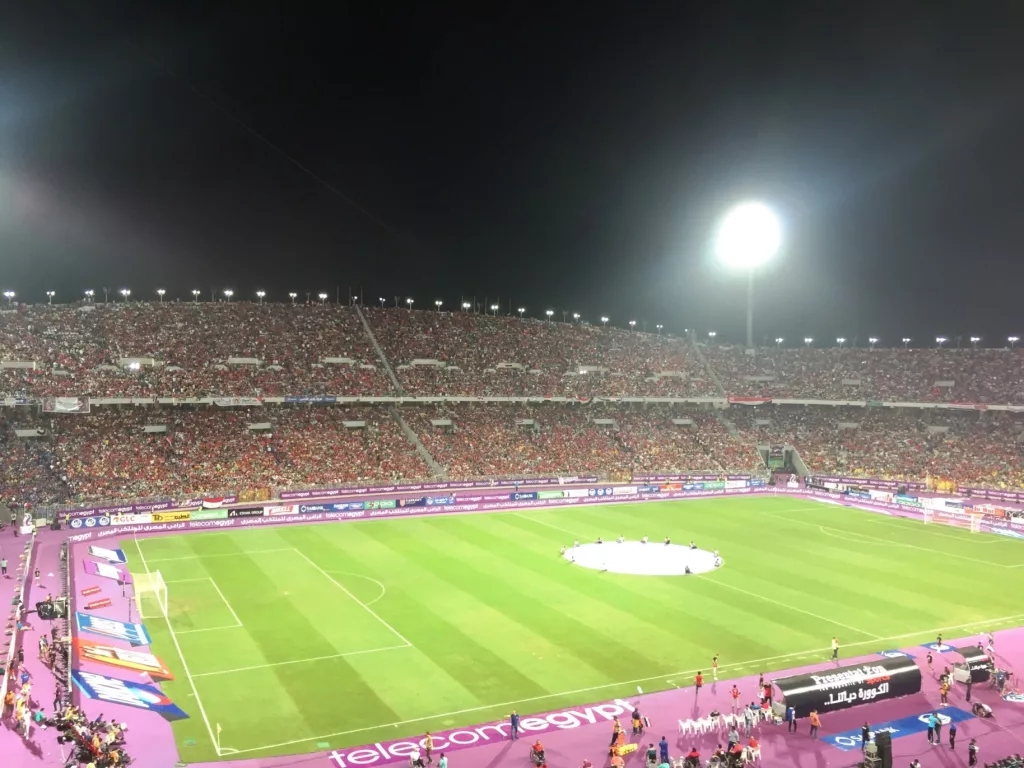
With its capacity of 86,000 spectators, the Borg El Arab Stadium, located in the Mediterranean seaside town of Amreya, 25 kilometres west of Alexandria, the second-largest city of Egypt, comes in at number 10 on our list of the largest stadiums in the world.
The stadium opened in 2009, and its’ record attendance was the full stadium capacity of 86,000 people on October 8th, 2017 when Egypt triumphed over Congo in a 2-1 match. The stadium was also chosen to be one of the ones hosting the 2009 FIFA U-20 World Cups. In order to support Egypt’s quest to host the 2010 FIFA World Cup, the stadium was initially built as one of five international-standard stadiums.
Alongside Cairo International Stadium, the stadium became the home stadium of the Egyptian national team when Egypt’s bid to host the World Cup was unsuccessful. Together with the national team, Smouha, an Alexandria-based team, began using the stadium for home games in 2016 rather than Alexandria Stadium; for various reasons, Al Ahly, Al Ittihad, Al Masry, and Zamalek also used it for parts of their home games.
The stadium can accommodate 300 people on the terrace in addition to the 22 seats in the exclusive VIP cabin. Three-quarters of the stadium’s seats are located on the terrace and first-class stand, which are shaded by a metal canopy.
Over the years, Egypt has produced some of the best players in the world, including Mohamed Salah, the star striker for Liverpool, who is the most well-known at the moment. Therefore, it should come as no surprise that this North African country has built some incredible football venues for fans to witness players like Salah work their magic at home.
9. Malaysia’s Bukit Jalil National Stadium – Capacity: 87,411
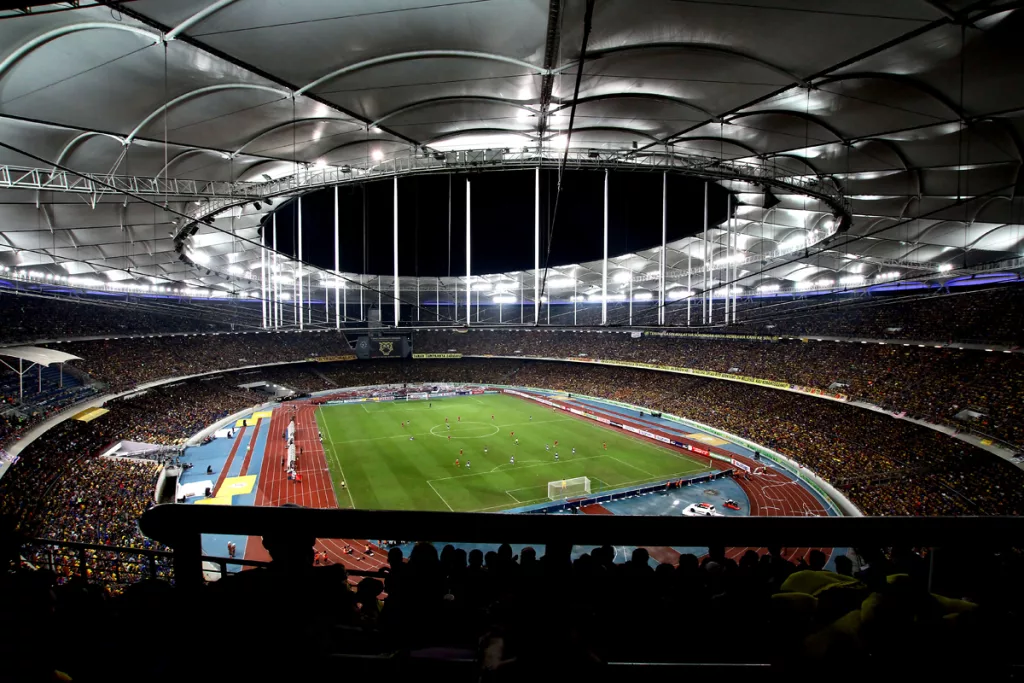
When you consider Malaysia’s relative status in the global football scene, neither the men’s nor women’s teams have ever qualified for the World Cup, but the Malaysian national football stadium, which opened in 1998, is an enormous venue.
Having an official seating capacity of 87,411, it is among the largest football stadiums globally and the second largest in Asia. Because of its capacity, this stadium ranks 9th among all football stadiums worldwide and comes in at 21st place among the biggest stadiums in the world.
In order to host the 1998 Commonwealth Games, the Bukit Jalil National Stadium was built on January 1, 1995. The cost was an astounding 800 million Malaysian Ringgit (about £140 million), and the stadium was ready on January 1, 1998. Shah Alam Stadium and Merdeka Stadium were replaced by the Bukit Jalil Stadium as the home ground for the Malaysian national football team following the 1998 Commonwealth Games in September. In addition, it functioned as the primary stadium for the Southeast Asian Games held in 2001, 2008, 2008 Southeast Asian University Games, and 2007 Southeast Asian Games.
8. Mexico’s Estadio Azteca – Capacity: 87,523
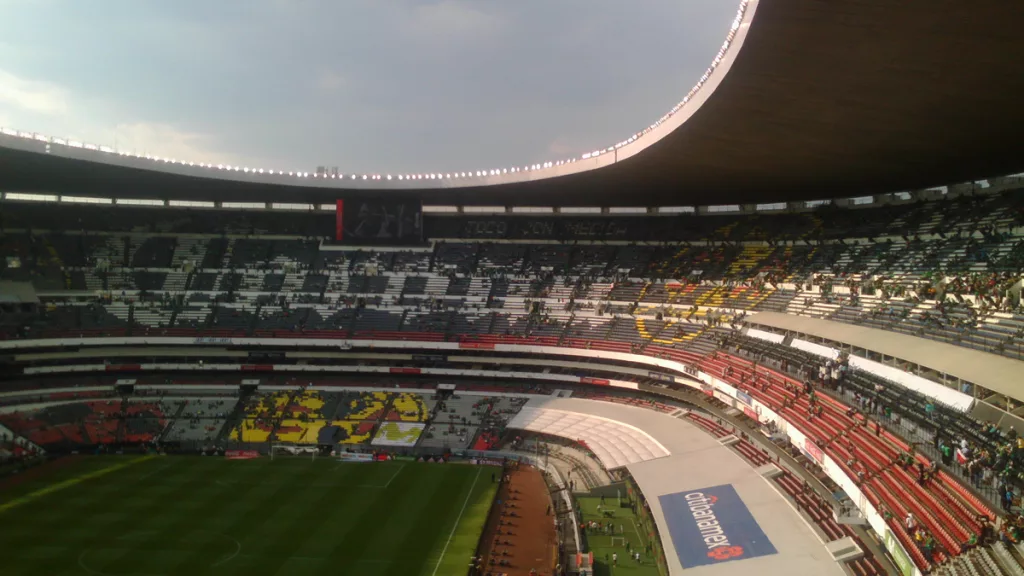
This stadium has hosted two FIFA World Cup finals – the 1970 FIFA World Cup and the 1986 FIFA World Cup, Mexico’s amazing Estadio Azteca is well-known for its attendance of passionate football fans. Estadio Azteca, perhaps Mexico’s most renowned football stadium, has a significant influence on how the game is perceived across the world.
Both the Mexico national team and the football teams Club America and Cruz Azul call this stadium “home”. It is the 9th largest football stadium in the world and the largest in Mexico and Latin America with a capacity of 87,523. The Azteca’s highest attendance for a football event dates back to July 1968 and stands at an incredible 119,853.
With its construction dating back to 1966, Estadio Azteca has hosted two World Cup finals and will soon add games from the forthcoming 2026 World Cup to its rich football legacy. It also hosted the quarterfinal encounter between Argentina and England in 1986, when Diego Maradona scored the “Goal of the Century” and the “Hand of God goal.” The Estadio Azteca holds the record of being the only football stadium globally to have hosted the FIFA World Cup victories of both Pelé (1970) and Diego Maradona (1986), two of the greatest players in history.
7. England’s Wembley Stadium – Capacity 90,000

Wembley Stadium is home to both the men’s and women’s England national football teams and their matches as well as the FA Cup, League Cup, and the EFL play-off finals held at the end of each season. It is both the biggest stadium in England and the second-largest stadium in Europe.
The 90,000-seat Wembley Stadium features two partly retractable roof structures, 90,000 seats, 166 executive suites, a famous arch that is the largest single-span roof structure in the world, 2,618 restrooms (more than any other venue in the world), and a host of other amenities.
The stadium hosts more important English football matches than only the FA Cup final and England home matches. These matches include the FA Community Shield, which opens the season, the League Cup final, the FA Cup semi-finals, the Football League Trophy, the Football League play-offs, the FA Trophy, the FA Vase, and the National League play-offs. The 2011 and 2013 UEFA Champions League Finals, eight games from UEFA Euro 2020 (including the final and both semi-finals), UEFA Euro 2028, and the UEFA Women’s Euro 2022 final were all held at Wembley, a UEFA category four venue.
The 2024 UEFA Champions League Final will take place there. The football gold medal games from the 2012 Olympic Games were also held at Wembley.
6. Egypt’s New Administrative Capital Stadium – Capacity: 93,940
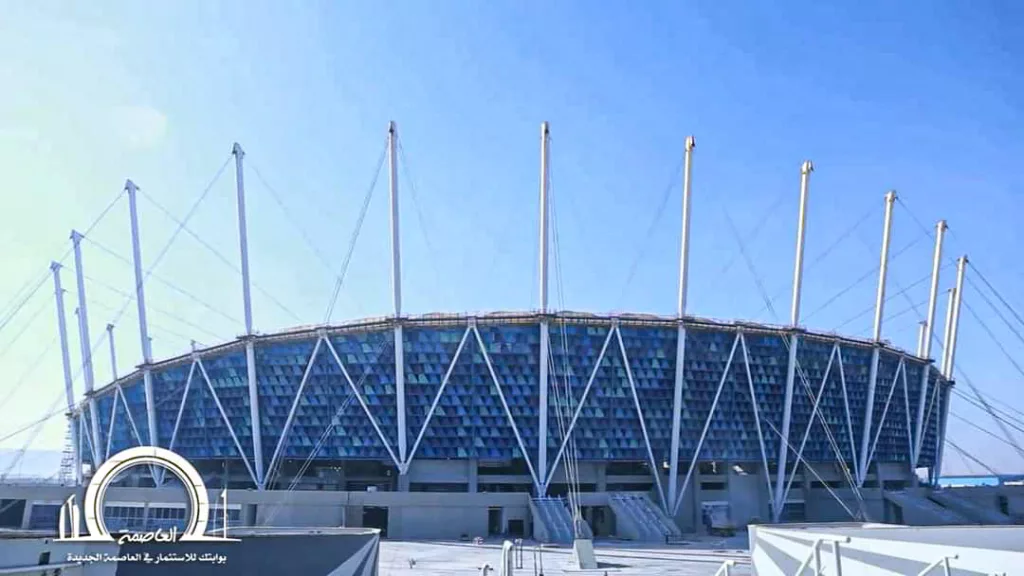
This stadium opened in June 2023, and with a capacity of 93,940, the New Administrative Capital Stadium is expected to surpass Borg El Arab as the largest stadium in Egypt. The incredibly ambitious project, which is a brand-new facility 50 kilometres east of Cairo, the capital of Egypt, has been labelled “the largest urban planning challenge in Egypt’s history.”
5. South Africa’s FNB Stadium – Capacity: 94,736
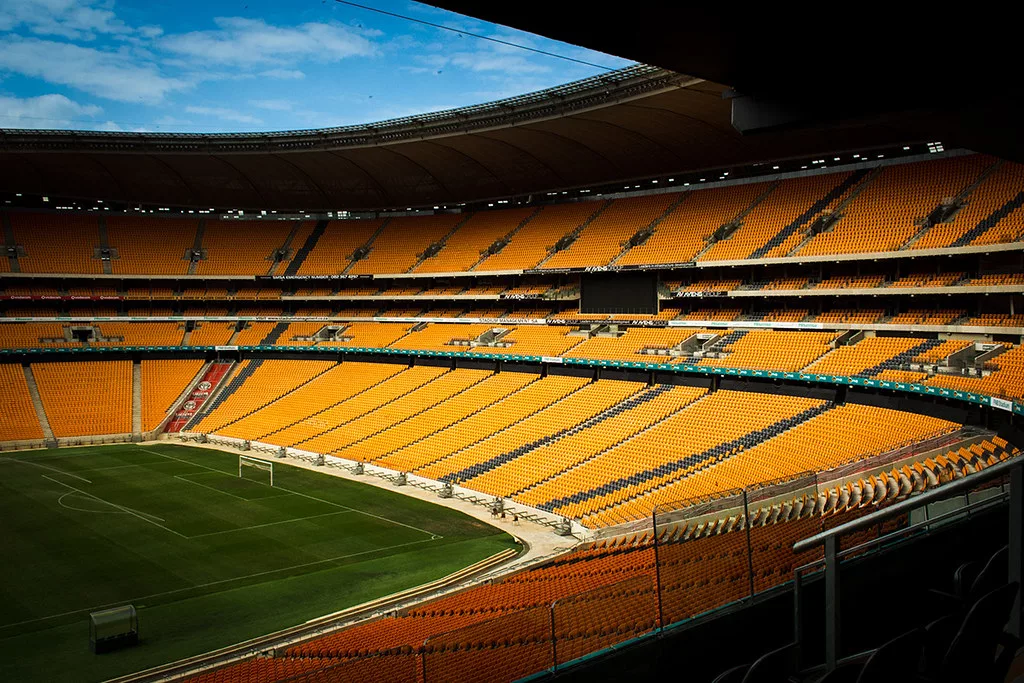
This stadium hosted the 2010 World Cup and marked Africa’s first-ever iconic football tournament held in the continent, and Johannesburg’s FNB Stadium played a significant role in the narrative by showcasing thrilling events like Spain’s thrilling victory in the championship match. Although it was officially named First National Bank Stadium, FNB Stadium was also known as Soccer City at the time.
It is the largest stadium in Africa and the fourth-largest football stadium globally, with a capacity of 94,736. It is now home to Kaizer Chiefs, one of the most successful football teams in the country, as well as South Africa’s national football stadium for friendlies and tournament qualifiers, and the South African premier soccer league matches are also frequently played there.
Approximately $440 million was invested in building FNB, which reopened in 1989. Ahead of the 2010 World Cup, the venue had a major makeover, including the installation of a new roof, luxurious executive suites, enhanced floodlights, and remodelled changing facilities.
4. USA’s Rose Bowl Stadium – Capacity: 95,542
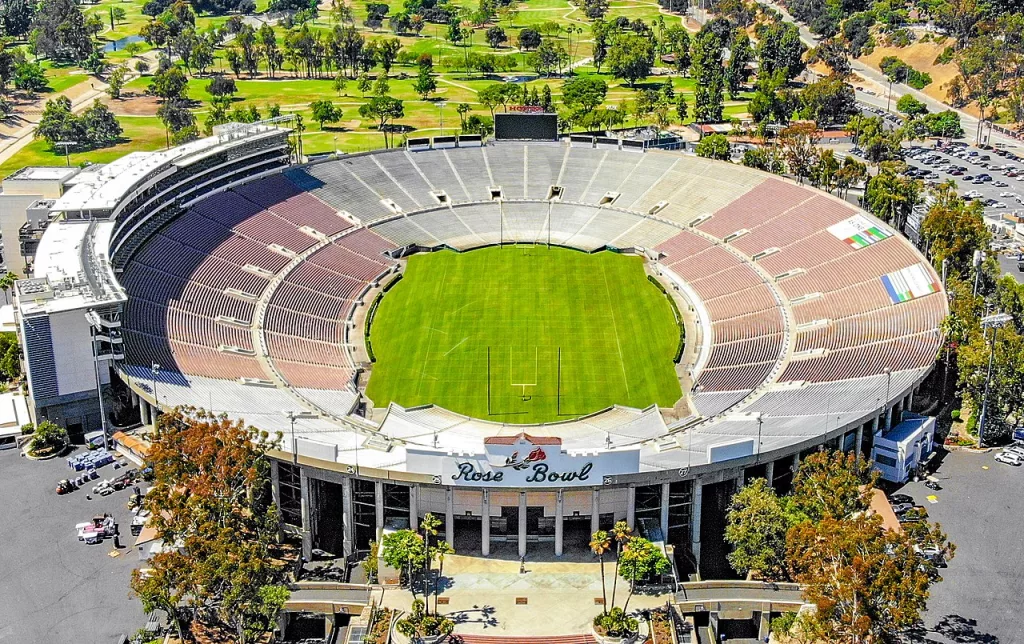
California’s Rose Bowl Stadium ranks on our list as the 6th largest football stadium in the world. Massive stadiums can be found all across the United States, and while most of them are used for baseball and American football, the Rose Bowl, which has a capacity of 95,542 people, is a well-known football (soccer) arena.
The venue was built in 1922 and is located in Pasadena, California. The stadium underwent extensive renovations in 2019 to modernise it, although certain changes resulted in a small reduction in capacity. It hosted the 1994 FIFA World Cup final and is home to MLS teams like LA Galaxy.
At the 59th Rose Bowl match, a college football event held back in 1973, an amazing number of 106,869 people attended. This attendance record still stands today.
3. Spain’s Camp Nou Stadium – Capacity: 99,354
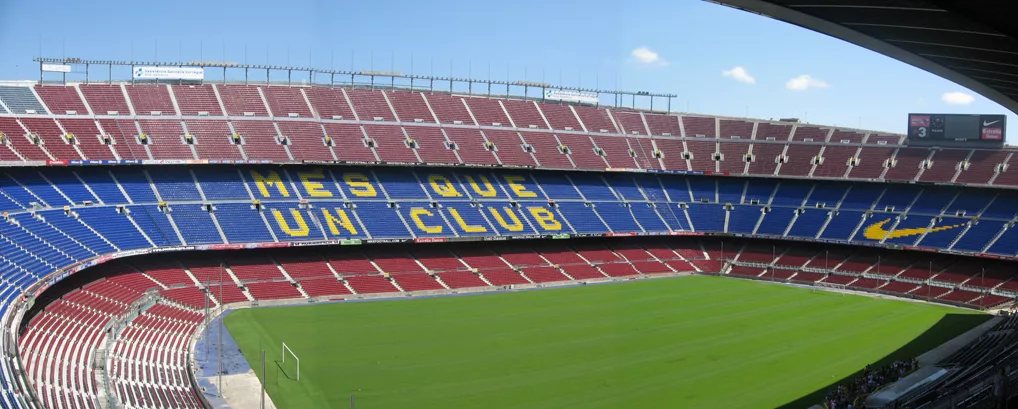
Coming up as the second runner-up in our list of top 10 largest football stadiums, located on the outskirts of Barcelona, Camp Nou is perhaps the most famous stadium in Europe and one of the largest ones. It was opened in 1957 and is regarded as one of the most famous stadiums in the world. While it has witnessed some incredible footballing moments, there’s probably not a single football fan in the world who doesn’t know this famous stadium down to a T.
While major renovations are being done to their historic stadium, Camp Nou, Barcelona is now holding its home games at the site of Catalan rivals Espanyol. This amazing stadium has a capacity of 99,354, but Barcelona hopes to increase its capacity to an incredible 105,000, which would propel it even further up in our list in the future.
A unique venue in football history, it was reportedly built for a whopping €1.73 billion (the new additions alone are reportedly costing more than €600 million). Camp Nou has been used for football events, including the 1982 FIFA World Cup matches, El Clasico matches, and Champions League finals.
2. Melbourne Cricket Ground, Australia – Capacity: 100,024

The second largest football stadium in the world’s name may be confusing to some, but it’s definitely not used just for cricket! second-largestThe MCG is home to several World Cup qualifiers and friendlies for the Australian national team, as well as Olympic games and friendlies between A-League teams. Although many fans come to watch cricket, this stadium also frequently hosts football events. This stadium is the second largest in the world, and it has a capacity of 100,024 people, so it makes sense to rank it as one of the biggest stadiums in the world on our list of the biggest football stadiums.
Although Melbourne Cricket Ground is a historic site that has been used for sporting events since 1853, much work has been done to bring it up to date for use in contemporary tournaments. $150 million was invested in 1992 to upgrade it, and a further $460 million was spent in 2006 on renovations.
FIFA, however, demands that more work be done on the MCG to improve its readiness for elite-level soccer if Australia’s quest to host the men’s World Cup in 2034 is to be successful.
1. Rungrado 1st Of May Stadium, North Korea – Capacity: 150,000
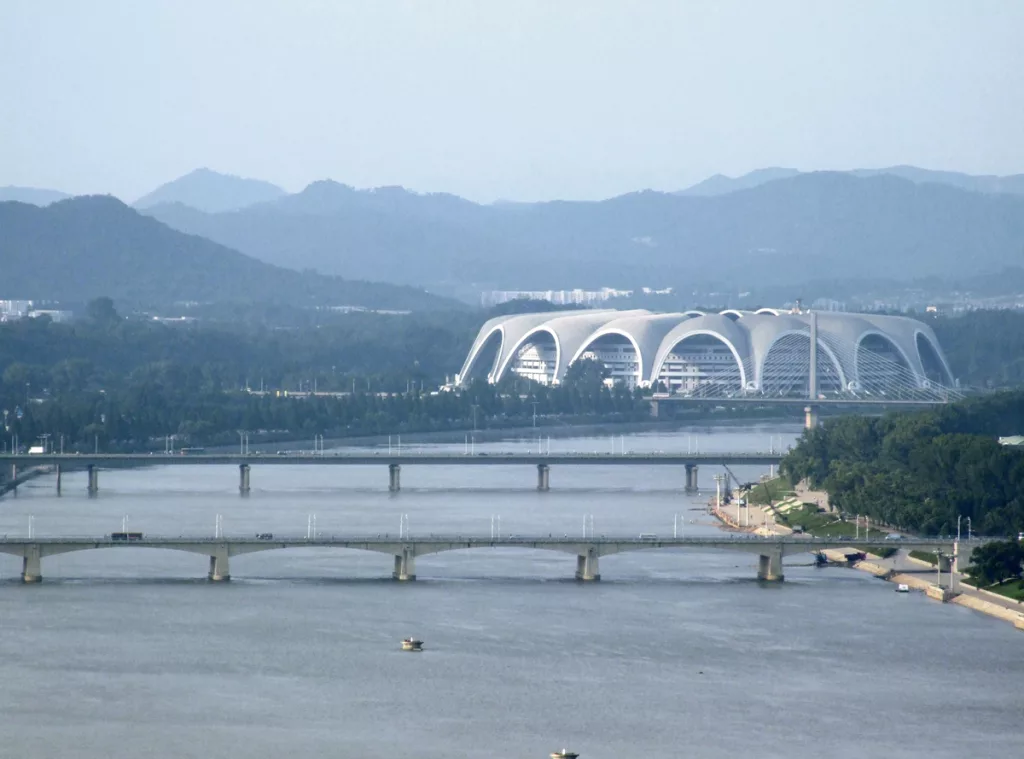
There are a lot of things about the Rungrado May Day Stadium in Pyongyang that we are unaware of, mostly since it is situated in the capital and conservative city of North Korea, making it the most secretive, but iconic stadium on our list. All we can be certain of, though, is that it’s the biggest football stadium on earth. The stadium easily rises to the top of our list given that it supposedly has a maximum seating capacity of 150,000, a startling figure.
The 1988 Summer Olympics being awarded to Seoul (North Korea was keen to establish itself as a legitimate Korean state) led to the construction of Rungrado 1st of May Stadium in 1989. It has since been used for North Korean football matches, but the stadium has also hosted gymnastics and sports competitions. The stadium, which is the largest in the world and spans 51 acres on Pyongyang’s Rungra Island, is named after its scalloped roof, which is made to mimic a magnolia bloom with sixteen arches grouped in a ring.
Overview
Now that you know about which stadium is the largest in the world, we hope you enjoyed learning and brushing up on your football knowledge skills even more.
Author

Master Sports Journalism graduate from the University of Westminster in London. Worked as a reporter in Plovdiv, Bulgaria and has journalistic experience at Sky Sports in London and DIEMA Sports at NOVA Broadcasting Group in Sofia, Bulgaria. Authority and expert person in sports betting and betting sites reviews.
Master Sports Journalism graduate from the University of Westminster in London. Worked as a reporter in Plovdiv, Bulgaria and has journalistic experience at Sky Sports in London and DIEMA Sports at NOVA Broadcasting Group in Sofia, Bulgaria. Authority and expert person in sports betting and betting sites reviews.


The Football Coach
How To Win Football Bets: A Betting Strategy To Help You Win Every Time

The Football Coach
How long is a football pitch? The complete pitch size guide















